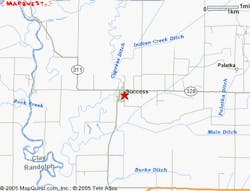Outsourcing has become the new paradigm in pharmaceuticals. Im not talking about moving production lock, stock and barrel to nations where labor costs are lower, although we all know thats happening, but outsourcing processes that are too expensive to own, whether a specialty packaging line, a novel process for producing dosage forms, or analytical instrumentation expertise for pharmaceutical process analytical technology (PAT) program development.Outsourcing NIR and pharmaceutical PAT projects involving NIR brings in technical expertise thats in short supply today. It also brings in a fresh, unbiased point of view, and can cut through the politics and turf battles that have stymied PAT projects at all too many pharmaceutical companies.I have seen any number of pharmaceutical companies PAT committees fail because they couldnt organize, or develop a coherent strategy for implementing PAT. Simply placing 12 or 14 people who dont have experience with NIR or PAT into a room will not spontaneously generate expertise.Pharmaceutical managers generally like the concept of outsourcing. Its easy on the budget, and for esoteric, once-in-a-lifetime projects, why buy the truck when you can rent it? For esoteric projects like software validation or LIMS implementation, consultants are only a phone call away.D-I-Y PAT?With NIR and PAT, though, the situation is quite different. In a typical pharmaceutical industry scenario, when a company is first considering rolling out a PAT project, a smart analyst will ask his or her supervisor for outside help, and an astute supervisor will ask management for the funding required.The response theyll typically hear has all the inertia of tradition behind it: You developed 200 HPLC methods without a consultant. You learned mass spec and are applying it without a consultant. You use infrared, UV/Vis, and fluorescence without the help of a consultant. Just do what youve always done; learn it yourself.Thats because the typical manager sees PAT as just another technical problem to be solved by his or her resident analysts. Of course, you know differently: PAT isnt just about technology. Its really analysis, engineering, software, formulating, economics, validation, and the list goes on.But today, few people at the average drug company have any experience with NIR. Even fewer have a grasp of PAT. Both of these points can make a compelling argument for outsourcing PAT.When I worked for a pharmaceutical company, I cant remember ever hiring a consultant for HPLC, other than signing up a specialist to teach the occasional short course or give an in-house lecture. In even the smallest of companies, there are likely to be quite a few people skilled in chromatography.Its different for MS and NMRIn fact, as more drug companies seek the assistance of instrument manufacturers, even techniques such as mass spectrometry and NMR are usually home grown. But, for these techniques, If there is no one in-house with the expertise required, applications people at the instrument vendor company can usually help out. If theyre not available, at least these subjects are taught in school, and there is always a course to take or a professor to speak with.Now, with pharmaceutical PAT, the pharmaceutical industry is confronted with two techniques often mentioned together that are not typically taught in school: near-infrared (NIR) spectroscopy and PAT.As a result, pharma companies embarking on PAT programs that involve NIR face the following conditions:
- NIR vendor companies that, typically, have few resident applications experts (and few of them with pharmaceutical backgrounds);
- A subject whose theory and practical aspects arent typically taught in universities;
- Few other scientists in the company who know enough about the technique to assist a start-up.






